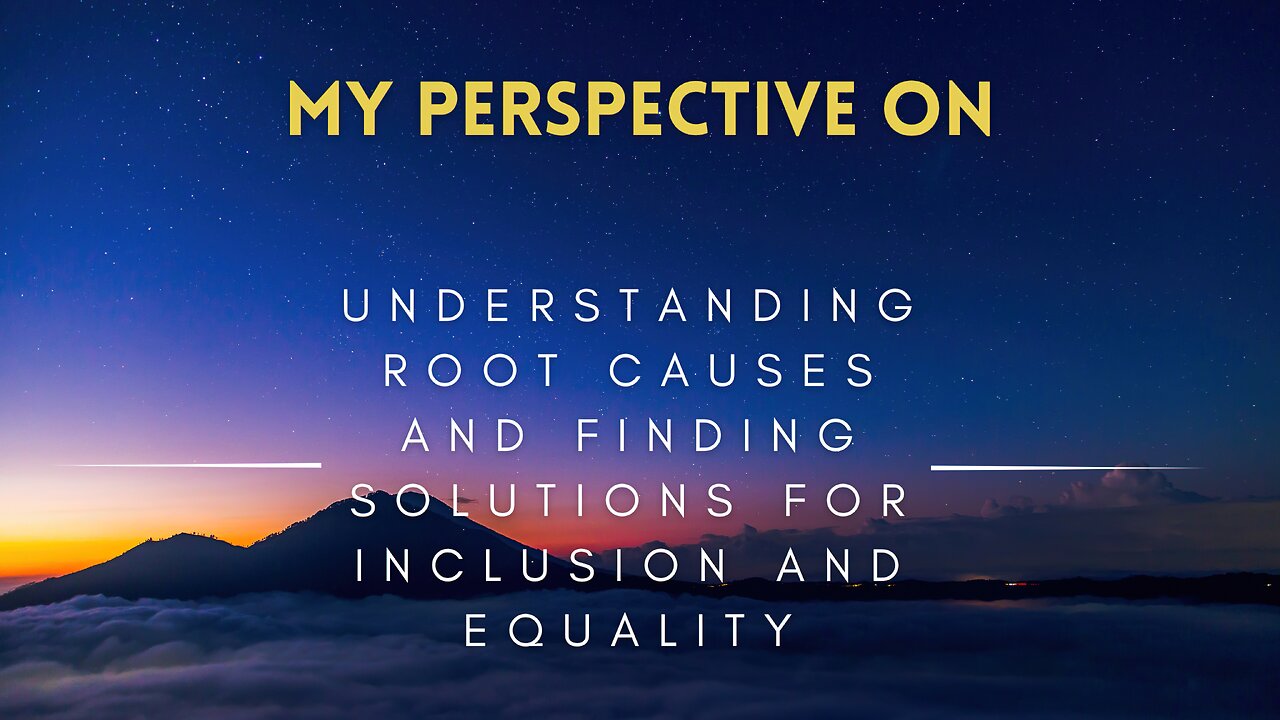Premium Only Content

15 - Understanding Root Causes and Finding Solutions for Inclusion and Equality
In this episode titled "Understanding Root Causes and Finding Solutions for Inclusion and Equality", we delve deep into addressing misconceptions and understanding the root causes of issues surrounding gender dynamics. We take a hard look at societal and cultural patterns, discussing behaviors that are detrimental to individuals, regardless of gender. Harnessing the power of data, empathy, and solution-focused thinking, we explore ways to foster diversity, equality, and inclusion. Join us as we strive for a society that affords equal opportunities for all to succeed and thrive.
#inclusion #equality #genderdynamics #empathyquotientscale #diversity #constructivefeedback #problemsolving #harmfulstereotypes #equalopportunity #automation #futureofwork #socialroletheory
References for Further Reading:
Baron-Cohen, S., & Wheelwright, S. (2004). The Empathy Quotient: An Investigation of Adults with Asperger Syndrome or High Functioning Autism, and Normal Sex Differences. Journal of Autism and Developmental Disorders, 34(2), 163–175. https://doi.org/10.1023/B:JADD.0000022607.19833.00
Eagly, A. H., Wood, W., & Diekman, A. B. (2000). Social role theory of sex differences and similarities: A current appraisal. In The developmental social psychology of gender. (pp. 123–174). Lawrence Erlbaum Associates Publishers.
Frey, C. B., & Osborne, M. A. (2017). The future of employment: How susceptible are jobs to computerisation? Technological Forecasting and Social Change, 114, 254–280. https://doi.org/10.1016/j.techfore.2016.08.019
Jost, J. T., & Kay, A. C. (2005). Exposure to Benevolent Sexism and Complementary Gender Stereotypes: Consequences for Specific and Diffuse Forms of System Justification. Journal of Personality and Social Psychology, 88(3), 498–509. https://doi.org/10.1037/0022-3514.88.3.498
Rawls, J. (1999). A Theory of Justice (2nd edition). Belknap Press: An Imprint of Harvard University Press.
-
 LIVE
LIVE
Wendy Bell Radio
5 hours ago9 Steps Ahead
12,808 watching -
 UPCOMING
UPCOMING
LFA TV
14 hours agoTIME FOR A NEW SPEAKER! | LIVE FROM AMERICA 12.26.24 11am EST
3.49K -
 1:40:22
1:40:22
Game On!
11 hours ago $2.08 earnedNFL Thursday Night Football Seahawks at Bears EXPERT Picks!
14.3K4 -
 LIVE
LIVE
xBuRnTx
1 hour agoWho's Ready for New Years!
255 watching -
 12:09
12:09
Tactical Advisor
13 hours agoSmith & Wesson Shield Plus Carry Comp
1.41K1 -
 4:35:25
4:35:25
Father Russell
6 hours agoDelta Force | Not A Woman? | Mad Martigan Time
38.5K1 -
 3:29:42
3:29:42
BrookieMonster
13 hours ago $43.52 earnedChristmas Stream: Marvel Rivals with CallmeSeags 🎄
164K29 -
 LIVE
LIVE
TheSaf3Hav3n
3 days ago| RUMBLES FIRST SUBATHON IS HERE!!! | DAY 4 |
581 watching -
 6:54
6:54
Dr. Nick Zyrowski
1 hour agoHIGH PROTEIN DIET Fixes Your Metabolism! - Weight Loss Not Required
8.01K5 -
 3:14:33
3:14:33
Joe Donuts Gaming
15 hours ago🟢 Live : Christmas is Here!! | Fortnite, Caroling, Light Tours and Donos !!
87.2K15